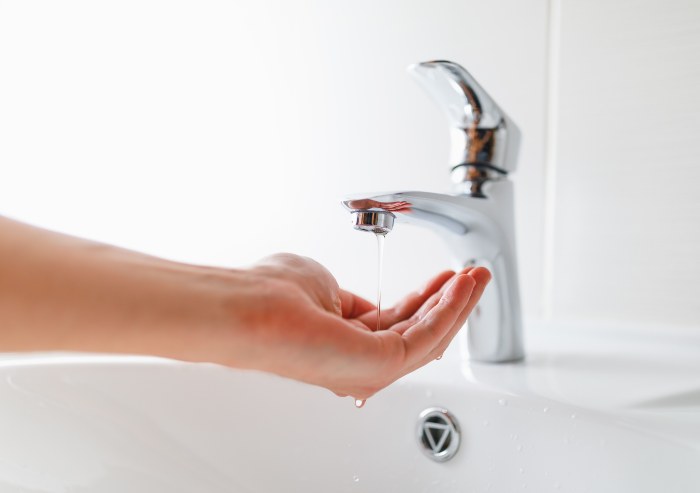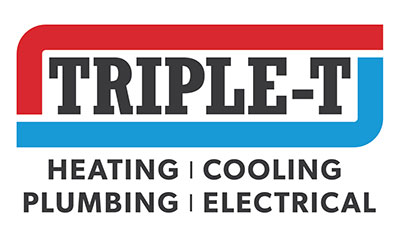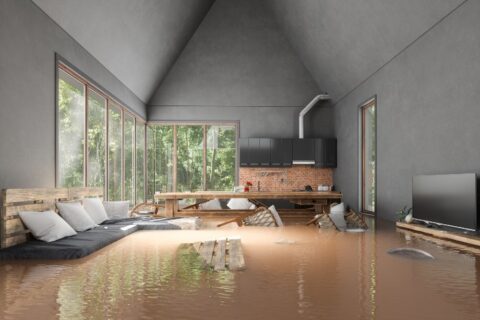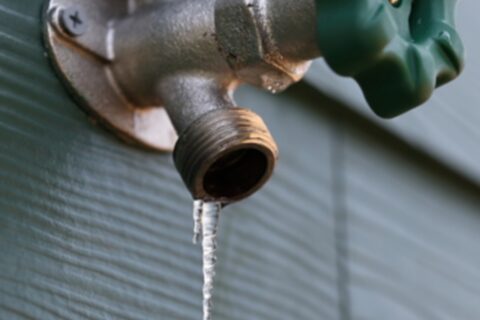Causes of Low Water Pressure in the Sink

Experiencing low water pressure in your sink can be frustrating. Washing dishes or cleaning your hands becomes more time-consuming, and it may indicate a larger plumbing issue. Understanding what causes low water pressure can help you address the problem effectively and restore your sink’s normal functionality. Below, we’ll explore the common causes of low water pressure, explain why these issues occur, and offer guidance on how to resolve them.
What Causes Low Water Pressure?
Low water pressure in sinks can result from several issues, ranging from minor obstructions to more significant plumbing problems. Common causes include:
- Clogged Faucet Aerator
The aerator is a small mesh screen located at the tip of the faucet. It mixes air with water and controls the flow. Over time, it can become clogged with mineral deposits, especially in areas with hard water.
- Symptoms: Water trickles out of the sink faucet despite strong pressure in other fixtures.
- Solution: You can remove the aerator, clean it with a vinegar solution, and reinstall it. Replacing it is also an inexpensive fix.
- Leaky Pipes
Leaky pipes are another common reason for low water pressure in sinks. Less water will reach your faucet if water escapes from the plumbing system.
- Symptoms: You may notice damp spots, mold, or visible leaks under sinks or in walls.
- Solution: Repair or replace the damaged pipe immediately to prevent further issues, such as water damage or high utility bills.
- Partially Closed Shut-Off Valve
The shut-off valve located beneath your sink controls the flow of water into the faucet. If it’s not fully open, it can restrict water pressure.
- Symptoms: Lower water pressure only in the sink controlled by the partially closed valve.
- Solution: Check the shut-off valve under the sink to ensure it’s fully open. Simply turn it counterclockwise to maximize water flow.
- Issues with the Main Water Supply
Sometimes, the problem isn’t the sink itself but the main water supply. A reduction in water flow from your provider can cause low water pressure in the entire house, including the sink.
- Symptoms: Multiple fixtures in the house experience reduced pressure.
- Solution: Contact your water provider to verify whether there are supply issues or maintenance disruptions. If necessary, they can guide you on the next steps.
- Corroded Pipes
Over time, pipes made of steel or galvanized material can corrode. This corrosion reduces the internal diameter of the pipes, restricting water flow.
- Symptoms: Gradual decrease in water pressure over the years, not just in one sink but potentially the entire house.
- Solution: Pipe replacement may be necessary. Consider upgrading to copper or PEX piping, which are more durable and resistant to corrosion.
- Water Pressure Regulator Issues
Many homes have a water pressure regulator to maintain consistent pressure levels. If it’s malfunctioning, it could cause pressure to drop.
- Symptoms: Low water pressure throughout the house, paired with plumbing system irregularities.
- Solution: Have a professional inspect and replace the water pressure regulator if necessary.
Why Is My Water Pressure Low?
Now that you know the potential causes, you may still wonder why your specific sink is affected. Low water pressure often results from localized issues, such as clogs or leaks, but it could also indicate widespread plumbing problems. Addressing the root cause is essential to restoring normal water flow.
The Importance of Diagnosing the Cause
Not all causes of low water pressure are immediately visible. For instance, while clogged aerators are simple to detect, internal pipe damage or main water supply issues may require professional assistance. Ignoring the problem can lead to inefficient water usage, higher utility bills, and further damage to your plumbing system.
Related Problems in the House
Low water pressure in the sink might also be part of a pattern affecting your overall plumbing. If you’re experiencing low water pressure in the house beyond the sink—such as in showers, toilets, or outdoor faucets—there may be a systemic issue requiring full-system evaluation.
How to Increase Water Pressure in the Sink
Once you’ve identified the issue, you can take steps to increase water pressure in the house or directly in the affected sink.
Tips to Improve Water Pressure
- Clean Your Fixtures: Regularly clean faucet aerators and showerheads to prevent mineral buildup.
- Check for Leaks: Inspect your pipes and repair leaks promptly.
- Open the Shut-Off Valve: Ensure shut-off valves below sinks and other fixtures are fully open.
- Inspect Pressure Regulators: If you suspect your pressure regulator is malfunctioning, contact a professional to test and possibly replace it.
- Upgrade Your Plumbing: Consider updating old or corroded pipes to modern, high-durability materials for long-term water flow improvements.
When to Call a Professional
Some issues, such as clogged aerators or partially closed valves, are manageable on your own. However, if low water pressure persists despite your efforts, it’s time to call a professional plumber. Experts like Triple-T Heating, Cooling, Plumbing & Electrical can diagnose and resolve complex plumbing problems quickly and efficiently.
Trust Triple-T for Your Plumbing Needs
At Triple-T Heating, Cooling, Plumbing & Electrical, we understand how inconvenient low water pressure can be. With nearly half a century of experience, our team is equipped to handle anything from minor repairs to complete pipe replacements. Our licensed and insured technicians provide expert service while treating your home with integrity and respect. When you choose Triple-T, you’re not just solving a plumbing problem—you’re gaining peace of mind. Contact us today to learn more about how we can help increase water pressure in your sink and throughout your home.


